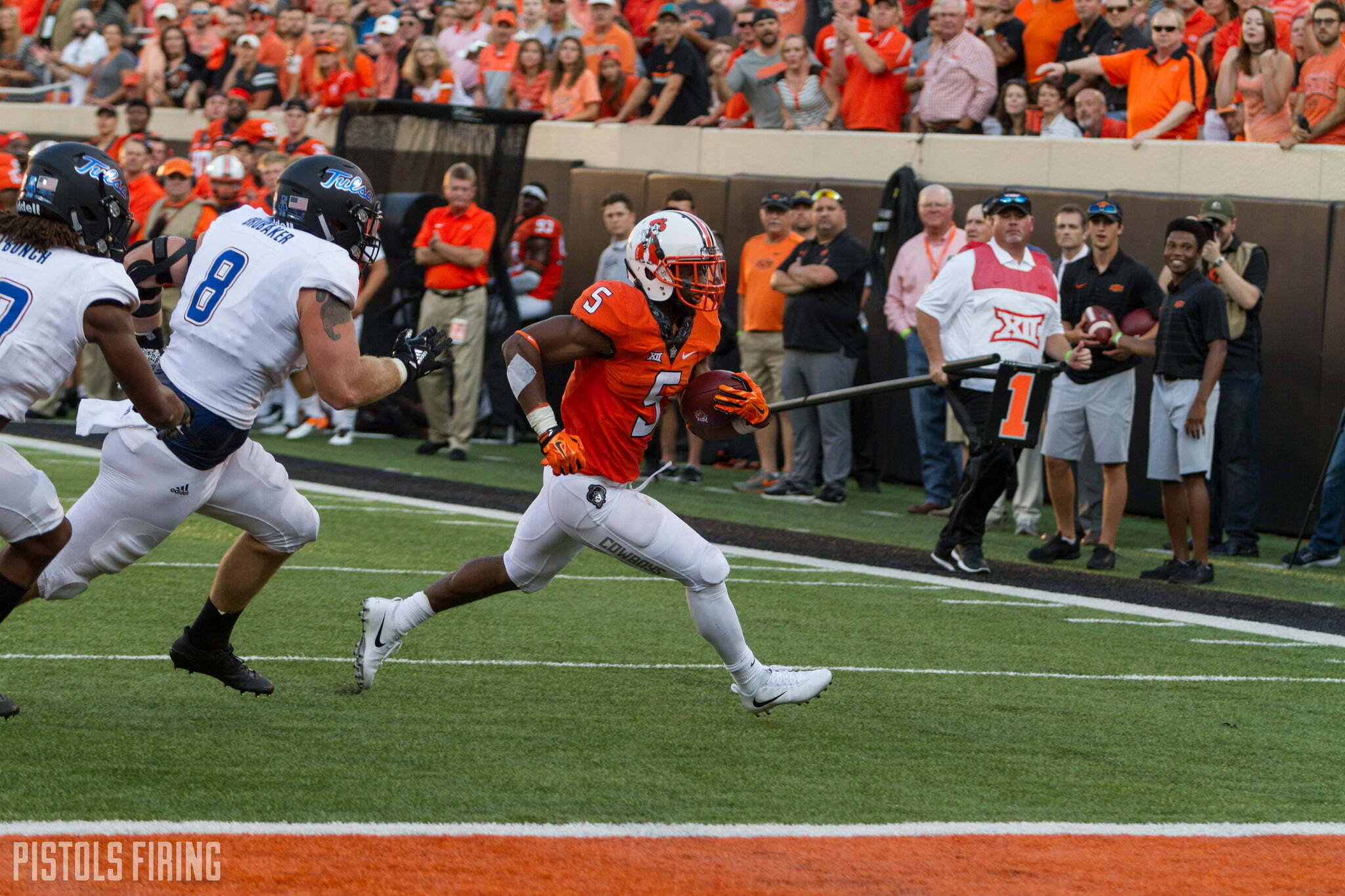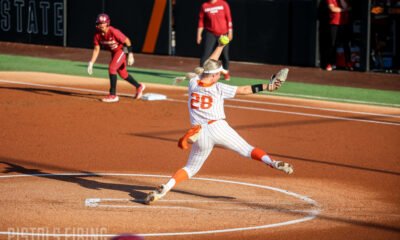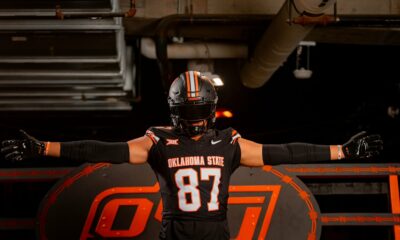Football
Why Isn’t OSU Using Its Receivers More in the Red Zone?

During our live mail bag/podcast on Thursday, Carson and Kyle were asked a question about OSU not utilizing its plethora of play-making wide receivers in the red zone. The guys discussed that and much more while previewing the West Virginia game. Go check it out.
But it got me thinking. So I started pulling the numbers just to see how far OSU has leaned on the run inside the 20 over the years, and how much of that may have been predicated on each offense’s star personnel.
Here’s a look at the splits for pass to rush inside an opponent’s 20-yard line over the last 10 years. We’ll use our “PPR” stat or points per red-zone attempt to see how effective each offense was.
| Red Zone | Pass | Rush | % Run | PPR |
|---|---|---|---|---|
| 2017 | 36 | 66 | 64.7% | 4.76 |
| 2016 | 50 | 118 | 70.2% | 5.14 |
| 2015 | 70 | 93 | 57.0% | 5.42 |
| 2014 | 31 | 89 | 74.2% | 4.71 |
| 2013 | 47 | 111 | 70.3% | 5.63 |
| 2012 | 76 | 128 | 62.7% | 5.46 |
| 2011 | 94 | 103 | 52.3% | 5.26 |
| 2010 | 71 | 91 | 56.2% | 5.54 |
| 2009 | 32 | 94 | 74.6% | 5.07 |
| 2008 | 31 | 143 | 82.2% | 5.42 |
So the pass-to-run disparity varies greatly between offenses and eras over the last decade, but the 2017 team has actually been fairly pass-happy (through seven games) compared to the rest. The only teams that passed more in the red zone were the 2010, 2011 and 2015.
Quick note: The 2017 offense has been more effective at getting points in the red zone than only that forgettable 2014 offense. The most effective was the 2013 offense manned by dual threats Clint Chelf and J.W. Walsh. Hey, Chelf had 10 passing and five rushing TDs in the score zone.
Now let’s take a look at how effective the Cowboys were between pass and rush through the years.
| Red Zone | Pass | Rush | |||
|---|---|---|---|---|---|
| Year | Pass Comp. | Pass TDs | INT | YPC | Rush TDs |
| 2017 | 47.2% | 7 | 1 | 2.9 | 14 |
| 2016 | 56.0% | 14 | 1 | 3.2 | 29 |
| 2015 | 57.1% | 20 | 0 | 2.3 | 20 |
| 2014 | 41.9% | 5 | 1 | 2.3 | 16 |
| 2013 | 59.6% | 15 | 1 | 3.0 | 32 |
| 2012 | 63.2% | 18 | 1 | 3.4 | 29 |
| 2011 | 70.2% | 25 | 2 | 3.0 | 28 |
| 2010 | 54.9% | 18 | 1 | 3.2 | 23 |
| 2009 | 46.9% | 9 | 1 | 3.1 | 19 |
| 2008 | 58.1% | 7 | 1 | 3.6 | 31 |
The 2010 and 2011 seasons were headlined by the Weeden-to-Blackmon connection so those numbers should be no surprise. Blackmon accounted for eight red-zone receiving TDs in 2010 and 12 in 2011. How about 25 (!) red-zone touchdowns in 2011? Rudolph threw 28 total all season last year.
In 2015, you had J.W. Walsh manning most of the red-zone reps for OSU, and he was extremely effective. Strangely enough, Rudolph threw 11 red-zone TDs to Walsh’s eight. But Walsh had 13 rushing TDs inside that area.
While the 2008 year was the most run-heavy (82 percent!), the reason Dez sticks in our memory is due to his eight red-zone catches for six touchdowns that year.
Mason Rudolph’s top three targets (Washington, Ateman and McCleskey) have shared the burden this year with a combined 12 catches for five scores.
The whole run-to-pass question obviously speaks more to personnel and scheme so I don’t think you can say, “Just throw it more.” On one side, OSU has had some injury issues on the O-line and some head-scratching special teams snafus. On the other, it is Mike Yurcich and Co.’s job to figure it out. And he’s got a handful of the best weapons in the country at his disposal to help.

-

 Hoops5 days ago
Hoops5 days agoReport: Steve Lutz Hiring George Mason’s Mike Ekanem as Assistant Coach
-

 Softball4 days ago
Softball4 days ago‘We All Love Her to Death’: Cowgirls Will See Familiar Face This Weekend in Kelly Maxwell
-

 Football4 days ago
Football4 days agoThree-Star Tight End Jordan Vyborny Commits to Oklahoma State
-

 Football5 days ago
Football5 days agoSpring Football: OSU Returns Experience at Corner as Cowboys Look to Shore Up Pass Defense






